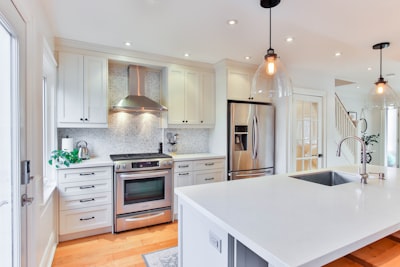Key Highlights
- Vastu Shastra principles help balance the natural energy fields in your home to create a harmonious environment.
- The placement of your main entrance is crucial, as it is the primary gateway for positive energy to enter your living space.
- Following Vastu tips for key areas like the pooja room, kitchen, and bedroom can significantly enhance your well-being.
- This ancient science focuses on the five elements—earth, water, fire, air, and space—to optimize your home’s layout.
- Applying these guidelines can help you achieve better health, attract prosperity, and enjoy a more satisfying life.
Introduction
Have you ever wondered how the design of your home affects your mood and well-being? Vastu Shastra, an ancient Indian science of architecture, offers powerful insights into creating a peaceful and prosperous living space. The core idea behind the science of Vastu is to balance the five elements of nature to optimize the energy flow within your house. When your home Vastu is correctly aligned, it promotes positive energy, which can improve your health, relationships, and overall happiness.
Origins and Historical Development of Vastushastra
The history of Vastu Shastra dates back to ancient times in India, where it was known as Vastu Vidya, or the science of dwelling. This ancient Indian science provides a framework for designing and building spaces that are in harmony with the natural world.
At the heart of this practice is the Vastu Purusha Mandala, a symbolic diagram that maps out the energy fields of a space. This concept has been a cornerstone of Indian architecture for centuries, guiding the creation of everything from temples to homes.
Ancient Roots and Influences of Shastra Vastu Shastra
The principles of Vastu are deeply rooted in the beliefs of ancient India, which saw a profound connection between human dwellings and the universe. The concept of the Vastu Purusha imagines a building as a living organism, with a distinct energy grid that must be respected and balanced.
This approach harnesses the power of nature, aligning your home with cosmic energies to create an environment that supports well-being. By viewing your home as more than just a structure, you can create a space that nurtures your physical and mental health.
Ultimately, the goal is to design a home that promotes spiritual growth and harmony. When your living space is aligned with these ancient principles, it becomes a sanctuary that supports a balanced and peaceful life, connecting you to the natural rhythms of the world.
Evolution and Adaptation in Modern Home Design
You might think Vastu is only for traditional structures, but it is incredibly relevant in modern architecture. Today, architects and homeowners are increasingly adapting Vastu principles to contemporary apartments, houses, and offices to create more harmonious living and working environments.
Whether you are building a new home or moving into an existing one, the rules of Vastu can be applied. For a new construction, you can integrate Vastu from the ground up, ensuring every room and element is perfectly placed for optimal energy flow.
Even if your house is already built, you can still improve its home Vastu. Simple adjustments, such as changing furniture placement, using specific colors, or correcting the energy of certain zones, can make a significant difference. Adapting Vastu allows you to enhance the positive vibrations of your space, no matter its age or style.
Core Principles of Vastushastra Explained
The principles of Vastu are designed to create a balance between your home and the universal energies. These guidelines are based on the idea that every building has its own energy field, which can be optimized for health, wealth, and happiness. The rules of Vastu Shastra are not just superstitions; they form a science of architecture that has been practiced for thousands of years.
Understanding these Vastu Shastra principles involves learning about the five elements, the significance of different directions, and the Vastu Purusha Mandala. In the sections below, we will explore these core concepts to help you apply them to your own home.
The Five Fundamental Elements and Their Role
Vastu Shastra is built upon the foundation of the five elements: Earth, Water, Fire, Air, and Space. Each element governs a specific direction and has a unique influence on your home's energy. A harmonious balance among these elements is essential for a positive and healthy living environment.
For example, the fire element is associated with the southeast direction and represents energy, passion, and financial prosperity. This is why Vastu tips often recommend placing your kitchen in this zone to harness its powerful energy for wealth and security.
The Vastu Purusha Mandala helps map out where these elements are most potent within your home's layout. By understanding the role of each element and its corresponding direction, you can make informed decisions about room placement and decor to create a balanced and supportive space.
Main Directions and Their Significance in English of Vastushastra

In Vastu, every direction holds a unique significance, but many people mistakenly believe that only a north or east-facing house is good. The truth is, a home can face any direction and still be auspicious. What matters most is the precise placement of the main entrance within that direction.
The outer boundary of a home is divided into 32 zones or 'padas', and the location of your front door in one of these padas determines the quality of energy entering your home. For instance, the northeast direction is considered sacred and ideal for a prayer room, while the northwest direction is governed by the air element, making it suitable for a living room or guest room. The west side is associated with the water element, and certain padas here bring prosperity.
Choosing an auspicious pada for your main entrance is one of the most important Vastu guidelines. Here are some of the favorable entrance locations for each cardinal direction:
- North: Mukhya, Bhallat, Soma
- East: Jayant, Mahendra
- South: Vitatha, Grihakhat
- West: Sugreev, Pushpadant, Varun
Essential Applications of Vastu Shastra for Different Home Areas
Applying Vastu guidelines to your home involves more than just choosing the right direction for your property. The strategic placement of various rooms and features within your house is equally important for creating a harmonious flow of energy. The use of Vastu Shastra ensures that each part of your home supports a specific function and contributes to the overall well-being of its occupants.
From the home entrance to the bedroom, every area has an ideal location according to Vastu. By following these recommendations for the entrance of a house and other spaces, you can direct healthy frequencies and avoid negative influences.
Entrance, Living Room, and Bedroom Placement Guidelines
Your main door is the primary entry point for energy, so its placement is critical. It should be located in an auspicious pada to welcome positivity. Keep this area clean, well-lit, and clutter-free to ensure a smooth energy flow into your home.
The living room is where your family gathers and guests are welcomed. For a north-facing house, this room can be in the north or northwest direction, while for a south-facing house, the southeast is ideal. Placing heavy furniture against the south or west walls helps stabilize the room's energy.
The master bedroom is a space for rest and rejuvenation, making its Vastu alignment crucial for a happy life. The southwest direction is often recommended for the master bedroom, as it promotes stability and relaxation.
- Position your bed with the headboard against the south or east wall.
- Never sleep with your head pointing north, as it can disrupt your energy.
- Avoid placing a mirror directly opposite your bed.
- Keep the bedroom free of electronic gadgets to ensure restful sleep.
Kitchen, Bathroom, and Staircase Recommendations Based on Shastra Vastu Shastra

The kitchen is a vital part of your home, representing nourishment and prosperity. According to Vastu, the southeast corner is the ideal location for the kitchen, as it is associated with the fire element. This placement ensures that the energy of the fire element enhances the financial well-being of the family.
The bathroom and toilet are associated with the disposal of waste and can be a source of negative energy if not placed correctly. It is best to locate the bathroom in the north or northwest areas of the house. In modern homes with attached bathrooms, careful placement is even more crucial.
The staircase connects different levels of your home and influences the flow of energy between floors. Its placement is complex and depends on factors like the house's dimensions and the occupants' professions.
- The cooking stove should be placed in the southeast corner of the kitchen, with the person cooking facing east.
- The toilet seat should ideally face the north or south direction.
- Keep the bathroom door closed at all times to prevent negative energy from spreading.
Common Mistakes and Practical Tips for Harmonious Living
A home with Vastu defects can sometimes lead to an accumulation of negative energy, which may manifest as health problems, financial stress, or relationship issues. Understanding common mistakes and how to correct them is key to enjoying the full benefits of Vastu.
Fortunately, you don't need to undertake major renovations to improve your home's energy. Following a few essential Vastu tips, such as decluttering your space, ensuring proper ventilation, and adding indoor plants, can promote good health and create a more harmonious atmosphere.
Avoiding Frequent Layout Errors and Enhancing Positive Energy
One of the most frequent errors is ignoring the placement of the main door, which can block the flow of positive energy. Another common mistake is cluttering the central area of the house, known as the Brahmasthan. This space should be kept open and empty to allow energy to circulate freely.
Following the rules of Vastu Shastra for color can also make a big difference. Using dark and intense colors like deep red or black on your walls can create a heavy, negative atmosphere. Instead, opt for light and soothing pastel shades like light blue, green, or beige to promote a calm and positive environment.
Here are some simple Vastu tips for enhancing positive energy in your home:
- Avoid keeping thorny plants like cacti inside the house.
- Make sure there is enough natural light, as it enhances positive vibrations.
- Do not place a dining table directly under a beam.
- Always repair leaking taps immediately to prevent financial loss.
- Keep the corners of your rooms, especially the northeast, clean and clutter-free.
Conclusion
In conclusion, understanding Vastushastra can significantly enhance the harmony and functionality of your home. By incorporating its core principles—such as the five fundamental elements and the significance of directions—you can create spaces that not only resonate with positive energy but also reflect your personal style. Whether you're designing a new home or reconfiguring your current space, being mindful of Vastu Shastra can lead to a more balanced and peaceful environment. Embrace these timeless guidelines and watch how they transform your living experience. If you’re ready to bring positive energy into your home, get in touch for personalized advice on incorporating Vastushastra principles into your design!





